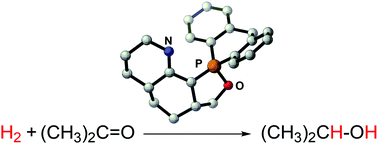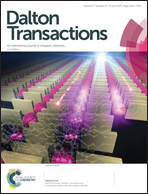A strategy for developing metal-free hydrogenation catalysts: a DFT proof-of-principle study†
Abstract
We computationally formulated a metal-free strategy to construct bifunctional active sites for reversible H2 activation, using a N-centered group as a Lewis basic site and a PV-centered group as a Lewis acidic site. By embedding the active sites into five-membered and 6-membered rings, we designed a series of molecules, some of which have feasible kinetic barriers to perform catalytic hydrogenation, calling for experimental realizations.



 Please wait while we load your content...
Please wait while we load your content...